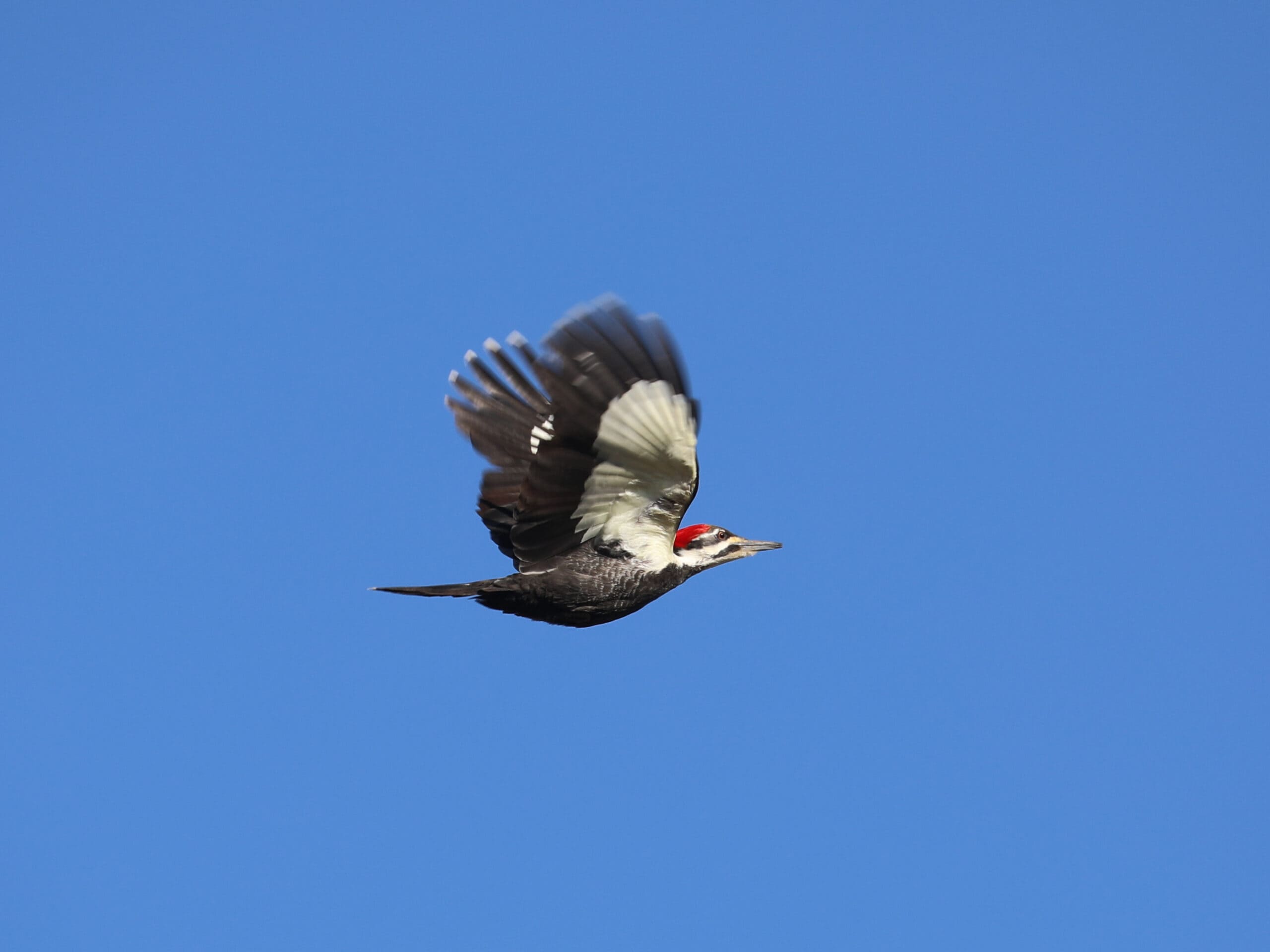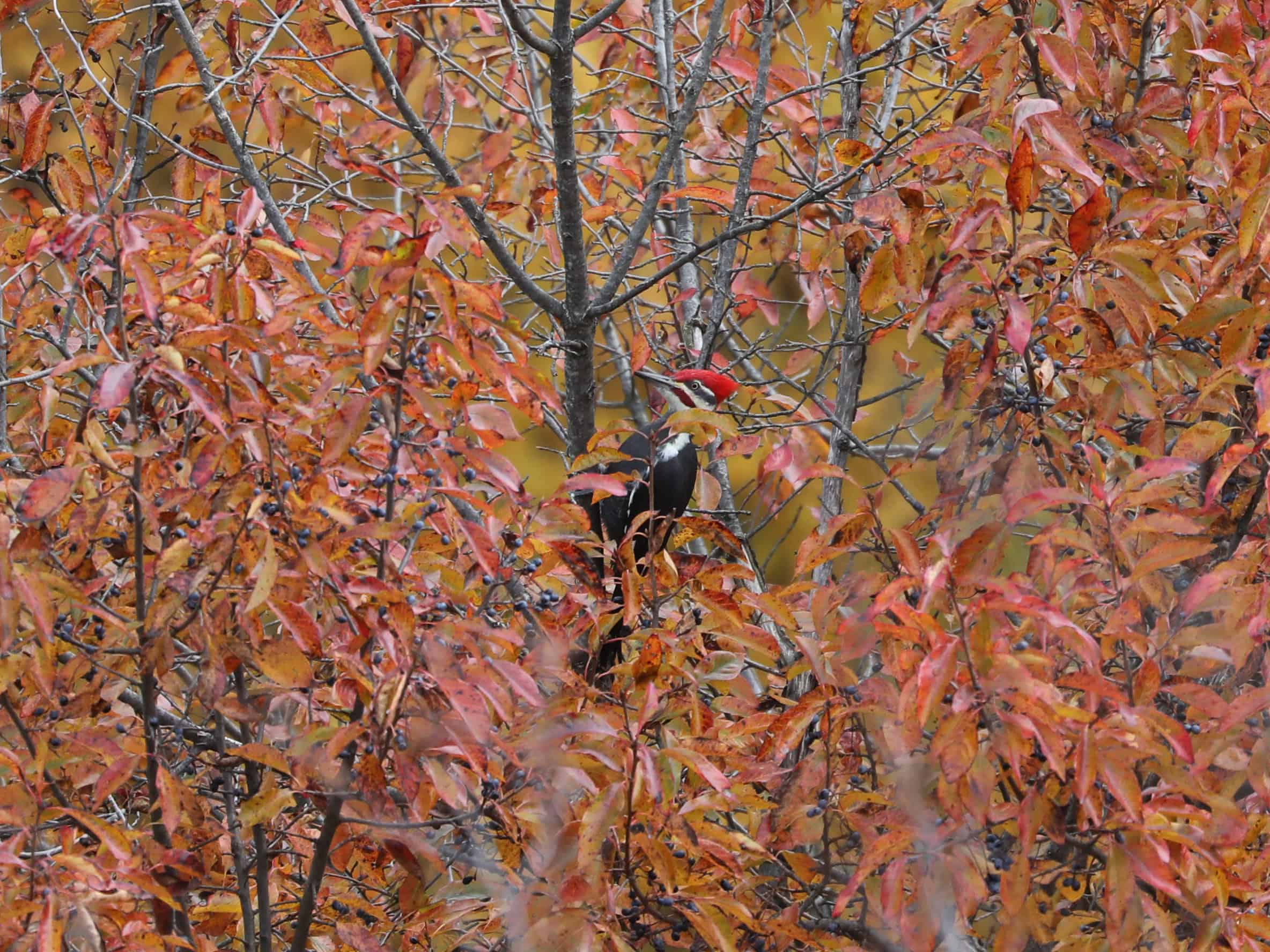North America’s Biggest Woodpecker: Pileated Woodpecker
Every encounter I’ve had with the Pileated Woodpecker has been special. I saw them somewhat regularly in my forested backyard where I grew up, just south of Pittsburgh. I don’t have as many trees in the landscape surrounding my current home in Lancaster, so I’ve only found them in my yard twice in the last 14 years. Pileated Woodpeckers require patches of forest with many large trees where they can find a suitable nesting cavity and enough of their favorite natural foods: beetle and ant larvae. You can also attract them to your yard with suet, tree nuts, and Bark Butter.
Since the likely extinctions of the Ivory-billed Woodpecker of the southeastern United States and the Imperial Woodpecker of western Mexico, the Pileated Woodpecker is now the largest woodpecker species in North America. Their size allows them to perform many valuable functions in our forests. For example, they break down dead and dying trees into smaller pieces, accelerating decomposition and adding nutrients to the soil. Additionally, they create nest cavities large enough for use by some other wildlife species like Eastern Screech-Owls and Wood Ducks.
Finally, what’s the answer to the age old question: What is the correct way to pronounce “pileated?” Some people start the name with “pie” while others say “pill.” I’ve always been partial to “pill,” but both pronunciations are technically correct. What does “pileated” mean? The scientific name of the Pileated Woodpecker is Dryocopus pileatus. The name derives from ancient Greek words meaning “tree breaker” and “capped.”
North America’s Biggest Woodpecker: Pileated Woodpecker
Every encounter I’ve had with the Pileated Woodpecker has been special. I saw them somewhat regularly in my forested backyard where I grew up, just south of Pittsburgh. I don’t have as many trees in the landscape surrounding my current home in Lancaster, so I’ve only found them in my yard twice in the last 14 years. Pileated Woodpeckers require patches of forest with many large trees where they can find a suitable nesting cavity and enough of their favorite natural foods: beetle and ant larvae. You can also attract them to your yard with suet, tree nuts, and Bark Butter.
Since the likely extinctions of the Ivory-billed Woodpecker of the southeastern United States and the Imperial Woodpecker of western Mexico, the Pileated Woodpecker is now the largest woodpecker species in North America. Their size allows them to perform many valuable functions in our forests. For example, they break down dead and dying trees into smaller pieces, accelerating decomposition and adding nutrients to the soil. Additionally, they create nest cavities large enough for use by some other wildlife species like Eastern Screech-Owls and Wood Ducks.
Finally, what’s the answer to the age old question: What is the correct way to pronounce “pileated?” Some people start the name with “pie” while others say “pill.” I’ve always been partial to “pill,” but both pronunciations are technically correct. What does “pileated” mean? The scientific name of the Pileated Woodpecker is Dryocopus pileatus. The name derives from ancient Greek words meaning “tree breaker” and “capped.”
About The Author
Dan Hinnebusch is the Ornithologist for Wild Birds Unlimited. Click to learn more.





